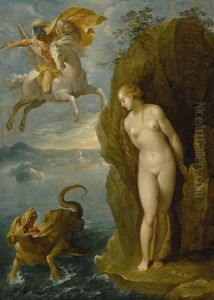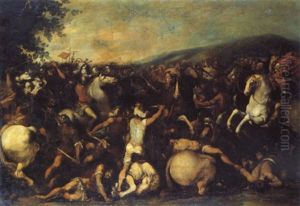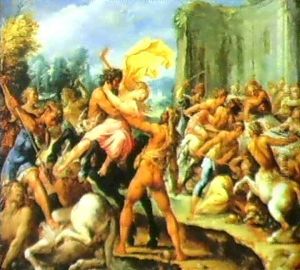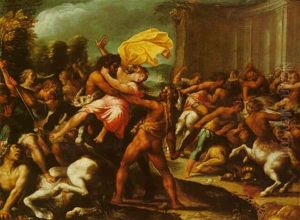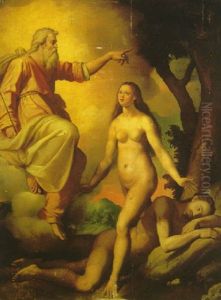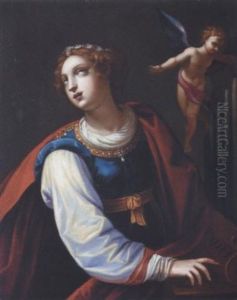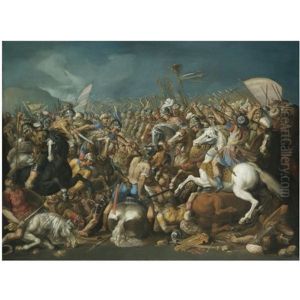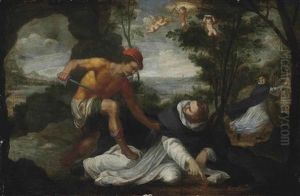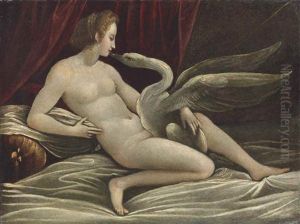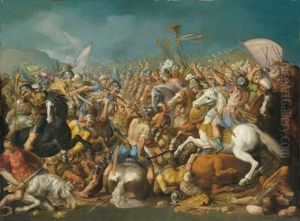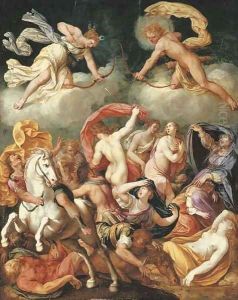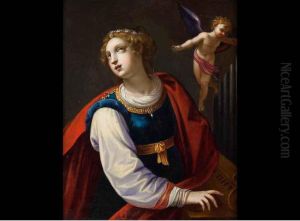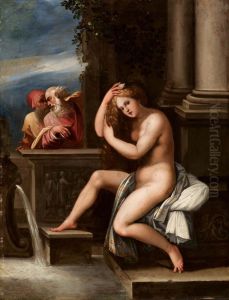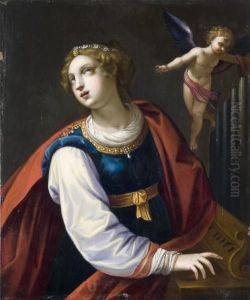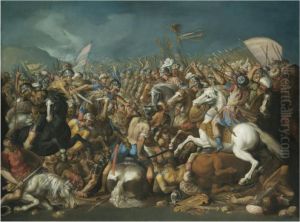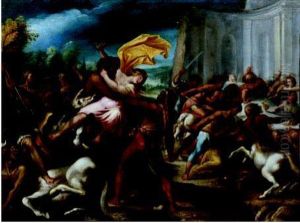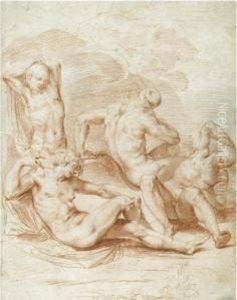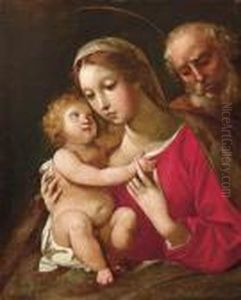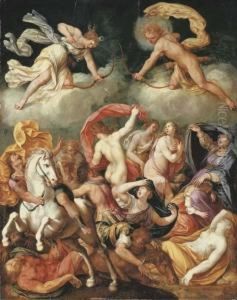Bernardino Cesari Paintings
Bernardino Cesari, an Italian painter of the late Renaissance period, was born in Rome in 1565. He was part of the illustrious Cesari family, which included his older brother, the renowned painter Giuseppe Cesari, known as the Cavaliere d’Arpino. Bernardino, often overshadowed by his brother's fame, was nevertheless an important figure in his own right within the Roman art scene of the late 16th and early 17th centuries.
Bernardino's artistic journey was deeply influenced by his brother, under whose guidance he honed his skills. His early works are marked by the Mannerist style, characterized by elongated forms and an emphasis on artificiality rather than naturalism. However, as his career progressed, Bernardino's style evolved, showing a greater inclination towards the emerging Baroque sensibility, with its focus on dynamism, emotional intensity, and a more naturalistic approach to depicting figures and scenes.
Throughout his career, Bernardino Cesari worked on various commissions for churches and noble families in Rome, contributing frescoes, altarpieces, and other decorative works. His contributions to the art of his time, though not as widely recognized as those of his brother, were significant in the transition from the Mannerist to the Baroque style in Italian painting.
Bernardino's personal life and relationships within the artistic community of Rome also played a role in his career. He was part of a network of artists, patrons, and intellectuals that included some of the most prominent figures of the era. This circle helped to foster his reputation and secure commissions.
Despite his achievements, Bernardino Cesari's work has often been studied in the shadow of his brother and the more dominant figures of the time, such as Caravaggio. Nevertheless, recent scholarship has begun to re-evaluate his contributions, recognizing him as an artist who bridged the gap between two significant periods in the history of art.
Bernardino Cesari died in Rome in 1622. His legacy, while not as prominent as that of some of his contemporaries, remains an important part of the narrative of Italian Renaissance and early Baroque art. His works continue to be appreciated for their beauty, technical skill, and as a testament to the transitional period in which he lived and worked.
